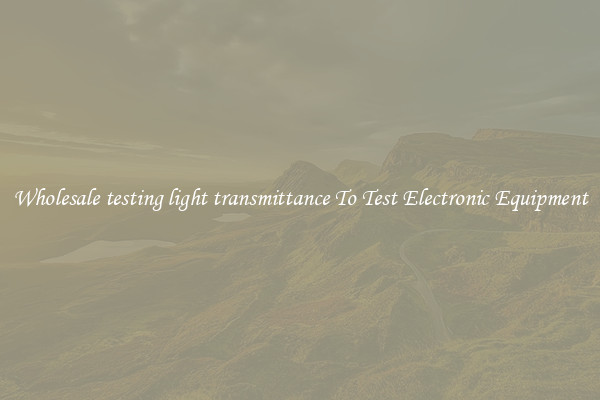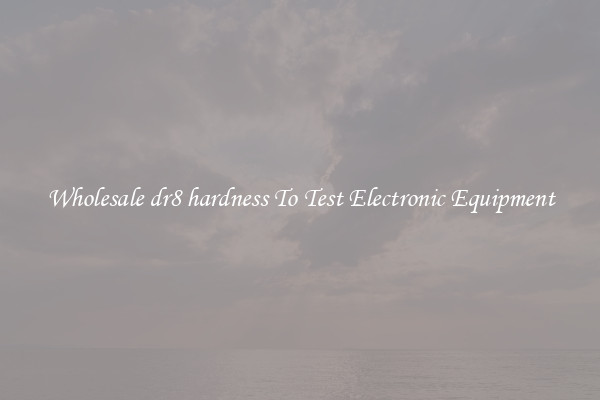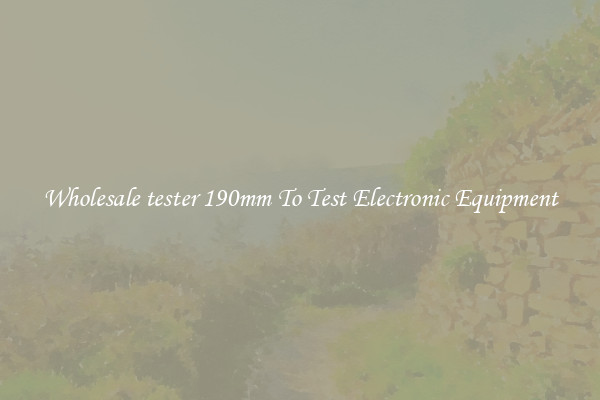Wholesale testing light transmittance To Test Electronic Equipment
Wholesale testing light transmittance, also known as light transmission testing, is a crucial process in the electronic equipment industry. This testing method ensures that the materials used in the production of electronic devices meet the required standards for light transmission. It is essential because the quality of light transmission can significantly impact the performance and functionality of electronic equipment.

Light transmittance refers to the amount of light that passes through a material without being absorbed or reflected. It is commonly measured as a percentage, with higher percentages indicating better light transmission. In electronic devices, light transmission is particularly important for displays, touch screens, camera lenses, and optical sensors.
When electronic equipment is being used, it is crucial to ensure that the light transmission is optimal to guarantee clear visibility, accurate sensor readings, and optimal performance. Wholesale testing light transmittance helps in identifying any shortcomings in the transparency of the materials used in manufacturing electronic devices.
One of the common methods for testing light transmittance is using a spectrophotometer. A spectrophotometer measures the intensity of light passing through a material at different wavelengths. It can determine the percentage of light transmission accurately and provide insights into the transparency of the material being tested.
During the wholesale testing process, a sample of the material used in electronic equipment manufacturing is placed in the spectrophotometer. The spectrophotometer then emits light of different wavelengths onto the material and measures the intensity of the light that passes through it. The data obtained from the spectrophotometer analysis helps in determining the light transmittance of the material.
Wholesale testing light transmittance is crucial because it ensures that only materials with optimal transparency are used in the production of electronic equipment. Using materials with poor light transmission can result in reduced display quality, inaccurate sensor readings, and compromised performance. In devices with touch screens, for example, poor light transmission can lead to reduced touch sensitivity and hinder the overall user experience.
Furthermore, wholesale testing light transmittance also helps in quality control during the manufacturing process. By testing the transparency of materials at the wholesale level, manufacturers can identify any deviations from the desired light transmittance levels and take corrective actions.
In conclusion, wholesale testing light transmittance plays a significant role in the electronic equipment industry. It ensures that materials used in device manufacturing have optimal transparency, which is essential for clear visibility, accurate sensor readings, and optimal performance. By testing light transmission, manufacturers can maintain high-quality standards and provide consumers with reliable and efficient electronic devices.

View details

View details

View details

View details








